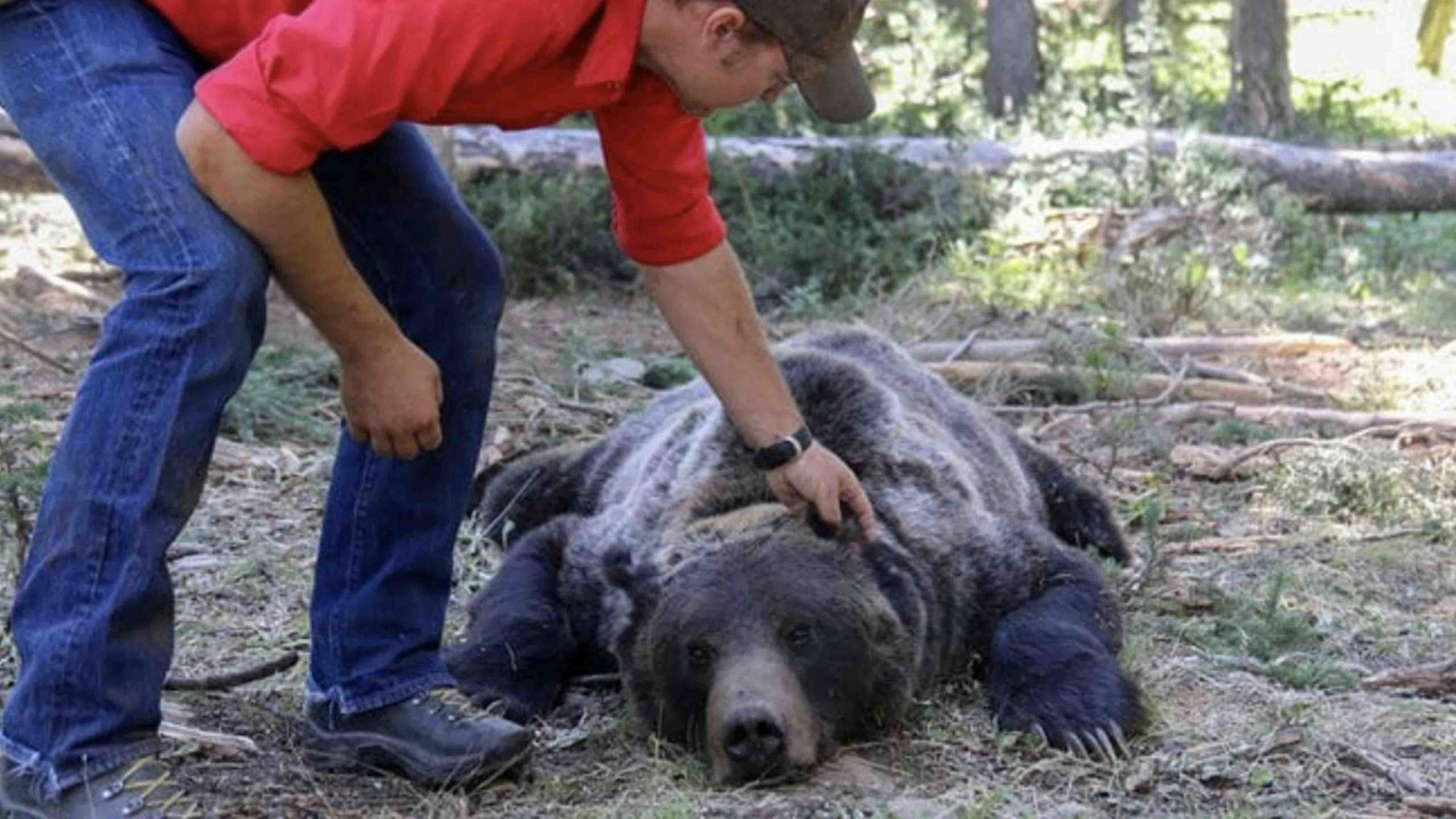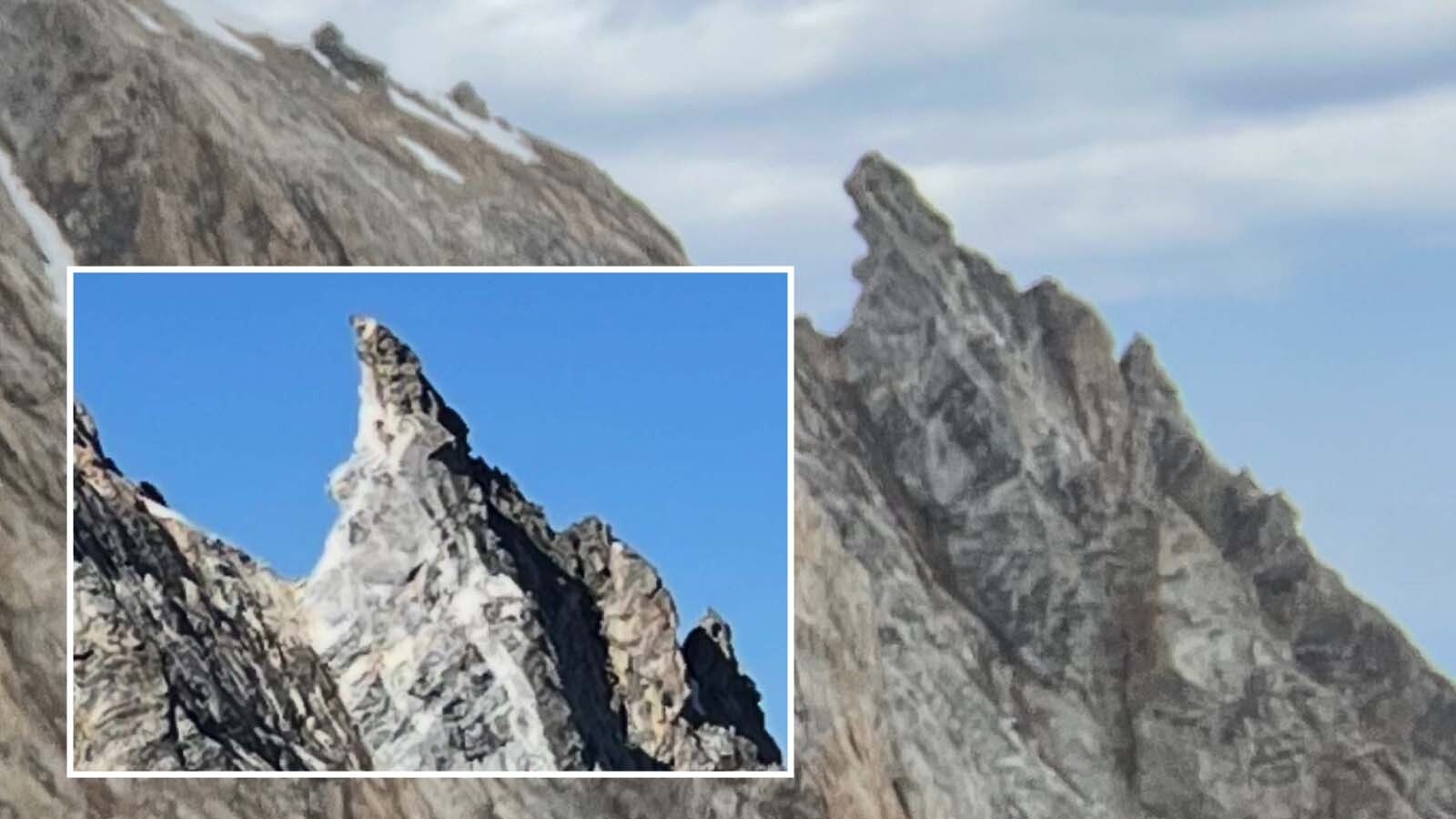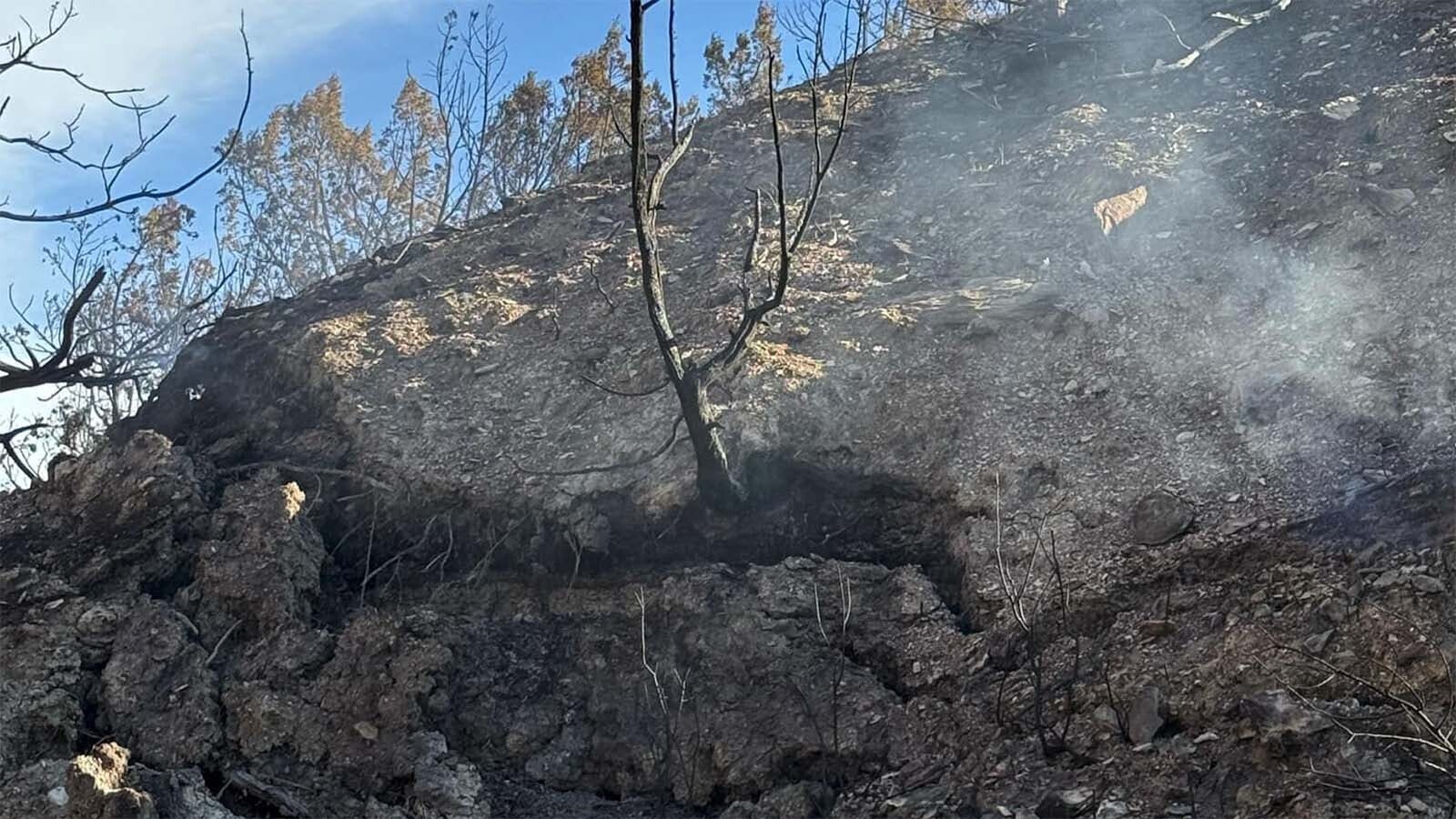Two male grizzly bears that killed livestock in separate incidents in the Cody and Pinedale regions of Wyoming were captured and relocated to remote drainages near Yellowstone National Park on Sunday and Monday, according to the Wyoming Department of Game and Fish.
The bear captured and relocated on Sunday was released in the Bailey Creek drainage about 11 miles from the south entrance to Yellowstone, according to a Game and Fish News release issued early Tuesday. The grizzly captured and moved on Monday was released in the Five Mile drainage roughly five miles from the Park’s east entrance.
The first bear “was involved in sheep depredations” while the second “was captured and relocated for cattle depredation,” Game and Fish large carnivore specialist Dan Thompson stated said Tuesday in an email to Cowboy State Daily. The first incident occurred on private property and the second on public land..
The bear captured and moved on Sunday was a “sub-adult,” estimated to be about three-four years old and weighing 265 pounds, Thompson said stated. The other bruin was a mature bear, approximately eight years old and weighing just over 361 pounds.
“Sub-adult” is a designation generally used for bears aged two-four years, that have split from their mothers, but aren’t yet old enough establish a home range and possibly start mating – which usually occurs around age five, according to Thompson.
Upon capture, tranquilized bears’ ages can be estimated according to tooth wear; exact aging requires an analysis of samples taken before the animals revive and are released.
Relocation is an option for grizzlies that have been involved in conflicts with human interests after “other deterrents or preventative options are exhausted or unattainable,” according to the Game and Fish news release. Bears that pose a direct threat to human safety don’t qualify for relocation and must sometimes be killed, according to the Game and Fish.
Headed For New Trouble?
As to whether bears such as the two males in question could be headed for conflict with other grizzlies that have already established territories in the relocation zones, Thompson said that’s possible, but not a major concern.
“Bears are not territorial in the sense that a wolf pack is territorial and actively defends territory boundaries,” he said.
Grizzlies can have overlapping home ranges, “but a resident male is not tolerant of another male attempting to acquire some of the ‘spoils’ of the home range (food sources, reproduction).”
“Our resident males are all pretty battle tested and battle scarred from some of these disputes, which would be expected of a high-density bear population as we have in the GYE” (Greater Yellowstone Ecosystem),” Thompson wrote.
That has made it more difficult to find suitable relocation sites, but there is no indication that the relocation program has hurt the overall survival rates or longevity of bears, Thompson said.
“Luckily, the majority of our bears do not develop a propensity for conflict behavior,” Thompson said. “Bears involved in management actions and relocation or removal gain notoriety in the media and public, but these are a relatively handful of situations for a population in excess of 1,000 bears that is spread across a diverse array of suitable habitat. We deal with conflict situations on a near daily basis, but that is a reflection of successful recovery efforts.”





